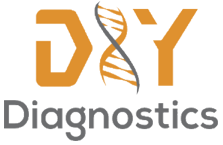 Hi Future DIYers!
Hi Future DIYers!
My name is Julia Kramer, and I joined DIY Diagnostics in the spring of 2018. As an aspiring medical professional, I thought it would be useful and fascinating to get a behind the scenes view of what goes into making useful diagnostics. I went in with the expectation that I would perform and maybe create some simple diagnostic tests, and get experiences that were required for the chemistry lab credit. What I wasn’t expecting was the opportunity to contribute to relevant scientific research, such as analyzing of the microbes in Waller Creek (see the picture of me at the creek!), become a coder, learn to 3D print, and gain a new mindset on what diagnostics are and how they can be improved.
Because of these experiences, I have been able to understand science in a way that I never have before. While I have practiced the scientific method time and time again, in the past I was always given the procedures of a well-designed study with known outcomes. In FRI, the outcomes were often unknown, so we had to adapt the procedures as more information emerged and were able to actually contribute to the research.
By practicing science this way, I learned a valuable lesson: the end goal of the research is important, but the process of getting there is even more valuable. Throughout the course of the semester I tried everything from using a NanoPhotometer to coding an app, and realized that I learned just as much, and maybe even more, from the trials that failed as the trials that were successful. As opposed to a normal classroom environment where you have to get the right answer, FRI was a safe place fail and learn until you finally reach your goals.
Being a part of FRI helped me become a part of science rather than just learn about it, and I am so happy to be a part of this research community.

